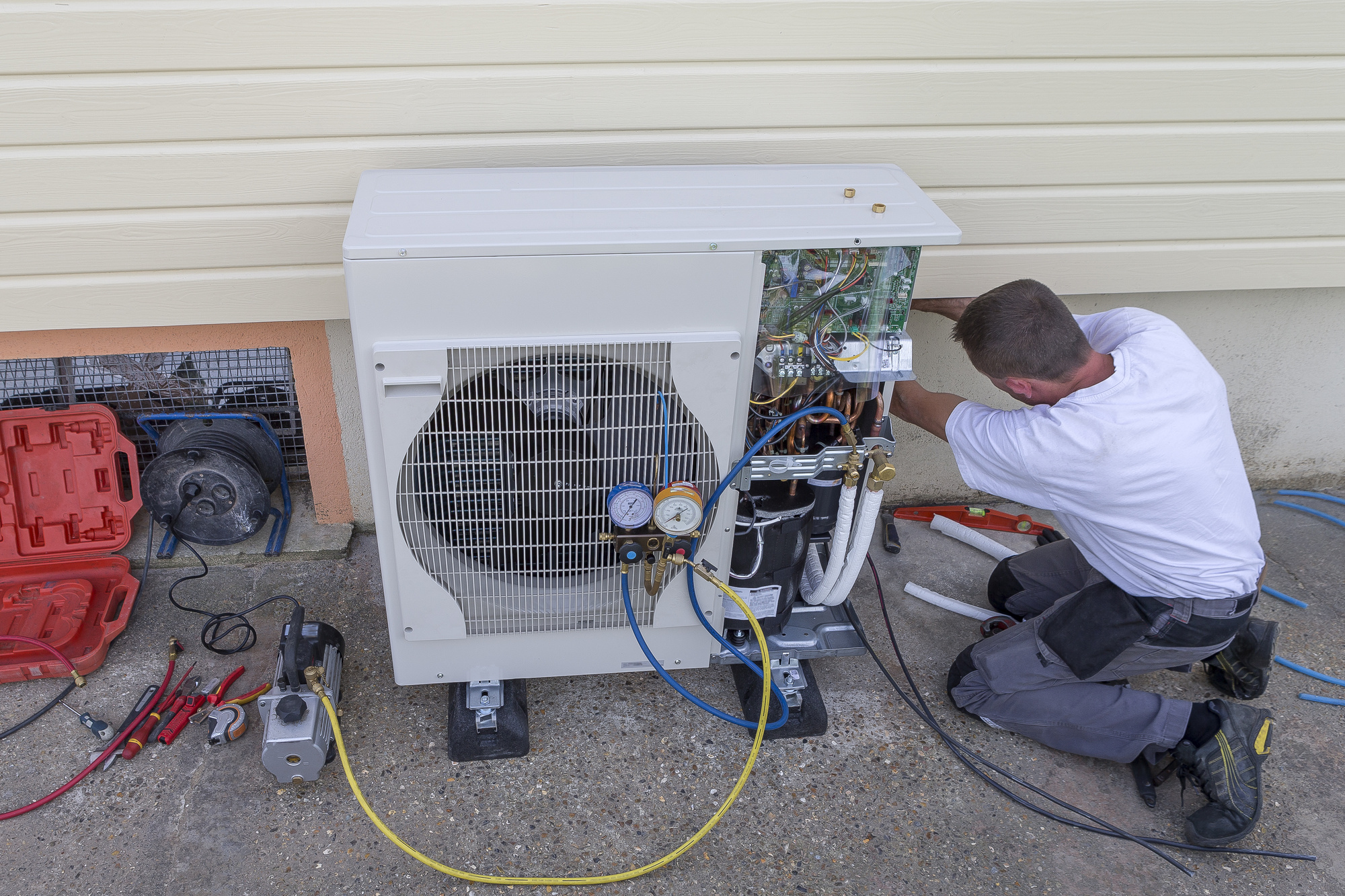Leonard Splaine 3 Common Heat Pump Problems and How to Fix them

We get how frustrating it is when you run into heat pump problems. Imagine it’s a dreary day and a bitter wind whips around your face. You can’t wait to get into your nice warm home, at the thought of it your pace quickens, you throw open the front door pick up your heat pump remote, hit the power button, and…..nothing.
Like any system in your home, it’s not unusual to experience heat pump problems from time to time. In some cases, knowing some basic heat pump troubleshooting steps can alleviate the need to call in professionals. Of course, when in doubt, you should never hesitate to contact a top notch professional company like Leonard Splaine Co
With that in mind, below are some of the most common heat pump problems, as well as possible explanations and fixes for these issues.
1. Heat pump isn’t turning on.
If your heat pump won’t turn on at all, it’s likely caused by one of four major problems:
- Thermostat problems: First of all, check to see if your programmable thermostat is set to have the heat come on at the right time. If everything seems correct, the problem might be a miscalibration that’s causing your thermostat to read the temperature incorrectly or an electrical problem that’s stopping the thermostat from communicating with the heat pump. In either case, you’ll need to have the thermostat serviced by a professional.
- Power loss: Sometimes, a tripped breaker is the root source of the issue. Check to make sure your breakers are all in the correct position. However, if this happens on an ongoing basis, it’s likely a sign of an electrical failure with the heat pump, which you should have professionally serviced.
- Broken starter capacitor: Take a moment to listen to your heat pump. If you can hear a faint clicking noise that occurs as the heat pump is supposed to be turning on, your problem is likely with the starter capacitor. This component is responsible for transmitting the electrical charge that turns on the motors. You’ll need to bring a technician out to replace it.
- Broken reversing valve: As the name suggests, the reversing valve allows the heat pump to work as both a heater and an air conditioner by reversing the direction of the refrigerant. If the heat pump turns on when you want cool air, but not for heat, this is likely the cause. It will also need to be replaced by a technician.
2. Heat pump is running constantly.
If your heat pump is constantly running, there are likely three main causes:
- Unusually cold weather: Heat pumps are designed to work much more gradually than a furnace. It’s possible that, if the weather is especially cold, your heat pump could run near-constantly without there being an issue.
- Thermostat problems: Again, check to make sure your thermostat is set correctly. If it is, it could be a miscalibration issue that’s causing the thermostat to read the temperature incorrectly or a wiring issue that signals an electrical problem. In either case, you’ll want to call in a professional to fix the issue.
- Broken compressor contractor: The compressor contactor controls how much power goes to your heat pump. If that’s damaged, it’s possible your heat pump could run all the time. You’ll need a professional to replace the part.
3. Heat pump isn’t sufficiently heating the home.
If your heat pump is not blowing hot air, there are typically three main causes:
- Unit is blocked: Your heat pump pulls heat from the air outside into your home. If the airflow to your unit is blocked by snow, ice, leaves or another type of debris, this can make it hard for the heat pump to do its job. Luckily, the solution is simple. Clean off your heat pump and clear away any debris that may be blocking the way.
- Air filter is dirty: Air filters are put in place to catch dirt and debris, but when too much builds up, it can block airflow to the compressor, the part of the unit that actually heats the air. This solution is simple, too. Check your filter and change it out for a new one if it’s dirty.
- Refrigerant charge is low: If your refrigerant levels are too low, likely from a leak, your heat pump will struggle to bring enough heat indoors to heat your home. Have a professional come out to check if the levels are too low or your system needs to be recharged.
Troubleshooting heat pump problems can be slightly tricky, and if you’re experiencing repeated issues it’s time to call for service.
If you have questions about your heat pump or general furnace questions, contact the professionals at Leonard Splaine Co Today!
